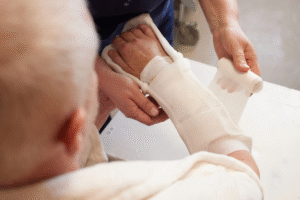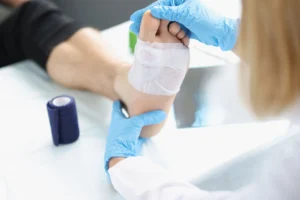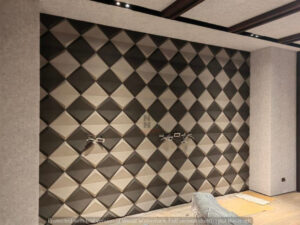Diastasis Recti is a condition that occurs when the abdominal muscles separate, creating a noticeable gap or bulge in the midsection. While it is most commonly associated with women after pregnancy, it can affect anyone, including men, individuals who have experienced weight changes, or people who perform exercises with improper technique. The effects are more than cosmetic, as this separation can contribute to discomfort, pain, poor posture, and reduced core strength. Seeking professional care ensures that you restore both function and confidence. At OPTCI in Fishers, Indiana, specialized physical therapy services are available to provide effective and personalized treatment for Diastasis Recti. Choosing Treatment for Diastasis Recti Fishers means working with experts who understand the condition and offer solutions that go beyond general fitness advice.
Understanding Diastasis Recti
Diastasis Recti occurs when the connective tissue that holds the left and right abdominal muscles together weakens and stretches. This often creates a visible bulge in the midsection and reduces the strength and stability of the core. While pregnancy is the most common cause, because the growing uterus places pressure on the abdominal wall, it is not limited to mothers. Significant weight gain, rapid weight loss, or repeated strain on the abdominal muscles can also contribute. Even athletes and fitness enthusiasts are at risk if exercises like sit-ups or heavy lifting are performed without proper alignment.
Left untreated, the condition can lead to more than a cosmetic concern. Poor core function impacts spinal stability, contributes to lower back pain, and makes everyday tasks more difficult. For many, the condition also affects confidence and quality of life. This is why professional Treatment for Diastasis Recti Fishers is so valuable.
Identifying the Signs of Diastasis Recti
Recognizing the symptoms early allows for more effective recovery. Some of the most common signs include:
- A persistent bulge or doming appearance in the midsection when standing, sitting up, or exercising.
- Loose or wrinkled skin in the abdominal area.
- Core weakness that makes it harder to lift, bend, or carry objects.
- Lower back pain caused by instability in the core.
- Digestive issues such as bloating or constipation.
These symptoms often appear gradually, especially after pregnancy or significant weight changes. By paying attention to these signs and seeking Treatment for Diastasis Recti Fishers, you can begin the process of restoring strength before symptoms worsen.
The Importance of Professional Treatment
Some people attempt to correct Diastasis Recti on their own with general exercise programs found online. Unfortunately, not all exercises are safe or effective, and in some cases, certain movements may make the separation worse. Crunches, sit-ups, or planks performed incorrectly can increase intra-abdominal pressure and strain the connective tissue further.
Professional guidance ensures that treatment addresses both the physical and functional challenges of the condition. A physical therapist trained in pelvic floor and core rehabilitation understands how to gradually rebuild muscle strength, improve alignment, and restore stability. This makes Treatment for Diastasis Recti Fishers a safer and more effective option than attempting recovery without expert supervision.
OPTCI’s Personalized Approach to Diastasis Recti Care
At OPTCI in Fishers, every patient receives individualized care designed to meet their unique needs. The process begins with a thorough assessment that includes a discussion of medical history, current symptoms, lifestyle factors, and personal goals. This comprehensive evaluation helps create a tailored treatment plan rather than a one-size-fits-all approach.
In some cases, a pelvic floor exam may be recommended. This assessment provides important information about muscle strength, coordination, and the relationship between pelvic floor function and abdominal health. Because the pelvic floor and core muscles work together, strengthening both areas is often essential for long-term results.
By choosing Treatment for Diastasis Recti Fishers at OPTCI, patients gain access to compassionate experts who guide them through every stage of recovery.
Core Treatment Methods at OPTCI
Pelvic Floor Strengthening: A strong pelvic floor is essential for restoring abdominal stability. Exercises that target this area improve posture, reduce discomfort, and support long-term core endurance. These exercises are taught with precision to ensure safety and effectiveness.
Manual Therapy Techniques: Hands-on techniques help restore muscle balance, improve flexibility, and enhance coordination. By addressing soft tissue restrictions, physical therapists can encourage proper alignment and functional movement patterns.
Targeted Therapeutic Exercises: These exercises are carefully designed to realign and strengthen the abdominal muscles without placing unnecessary strain on the separation. Progressions are introduced gradually, ensuring that the core rebuilds strength safely over time.
Lifestyle Adjustments: Education plays a key role in recovery. Patients learn strategies for movement, posture, breathing, and daily activities that reduce strain on the core. These adjustments not only aid recovery but also help prevent recurrence.
This combination of strategies creates a comprehensive program for Treatment for Diastasis Recti Fishers, addressing both immediate symptoms and long-term health.
What to Expect During Treatment
The first appointment typically lasts about an hour. During this visit, the therapist takes time to understand the patient’s concerns and goals while performing a detailed physical evaluation. The session takes place in a private and supportive environment where comfort and confidentiality are prioritized.
Over the course of treatment, patients are guided through exercises and techniques that are carefully chosen to meet their current ability. As progress is made, the exercises are advanced to continue building strength and stability. Education is a consistent part of the process, ensuring that patients understand how to apply what they learn in everyday life.
With consistent effort and professional guidance, patients undergoing Treatment for Diastasis Recti Fishers typically notice improvements in core strength, posture, and comfort within weeks, with long-term gains developing as treatment continues.
The OPTCI Difference
What sets OPTCI apart is the commitment to patient-centered care. The team consists of highly trained physical therapists who specialize in conditions affecting the pelvic floor and abdominal muscles. Their expertise, combined with compassion and a personalized approach, helps patients feel supported throughout the process.
Located in Fishers, IN, OPTCI provides convenient access to specialized care that may not be widely available elsewhere. For individuals seeking Treatment for Diastasis Recti Fishers, OPTCI offers a trusted local option that combines clinical excellence with a genuine dedication to patient well-being.
Long-Term Benefits of Treatment
Effective treatment does more than close the abdominal gap—it enhances quality of life. Benefits of working with the OPTCI team include:
- Stronger core muscles and improved stability.
- Better posture and reduced strain on the lower back.
- Improved ability to perform daily activities without discomfort.
- Increased confidence in body image and physical performance.
- Reduced risk of recurrence or long-term complications.
By addressing the condition holistically, Treatment for Diastasis Recti Fishers helps patients achieve lasting results.
Takeaway
Living with Diastasis Recti can be frustrating, but professional care offers a clear path toward recovery. OPTCI provides comprehensive and personalized Treatment for Diastasis Recti Fishers, giving patients the tools and support they need to regain strength, restore function, and feel confident again. By working with experienced physical therapists who specialize in pelvic floor and core rehabilitation, you can achieve long-lasting results and improve your quality of life. If you are ready to take the next step, contact OPTCI in Fishers, Indiana, and begin your journey toward a stronger, healthier you.
Frequently Asked Questions
What is Diastasis Recti and who is at risk?
Diastasis Recti is a separation of the abdominal muscles caused by stretching of the connective tissue. It is most common during and after pregnancy but can also affect men and women with weight changes, poor exercise techniques, or chronic strain on the core.
Can men experience Diastasis Recti?
Yes. Although it is commonly discussed in relation to postpartum women, men can also experience abdominal separation, especially if they engage in heavy lifting or have gained and lost weight rapidly.
How long does treatment usually take?
The timeline varies depending on the severity of the condition, the individual’s overall health, and their commitment to treatment. Many patients notice improvements within weeks, while full recovery may take several months.
Do I need surgery for Diastasis Recti?
Most cases can be successfully managed with physical therapy. Surgery is typically reserved for severe cases that do not improve with conservative care. OPTCI focuses on non-invasive, effective strategies for recovery.
Is treatment safe after pregnancy or C-section?
Yes. Physical therapy is designed to be safe and effective after childbirth, including for patients who have had a C-section. Therapists will adjust exercises based on recovery stage and comfort.
What makes OPTCI’s approach different from a regular fitness program?
General fitness routines may not address the specific needs of abdominal separation and can sometimes worsen the condition. OPTCI provides individualized care with exercises that are proven safe and effective for restoring abdominal function.











